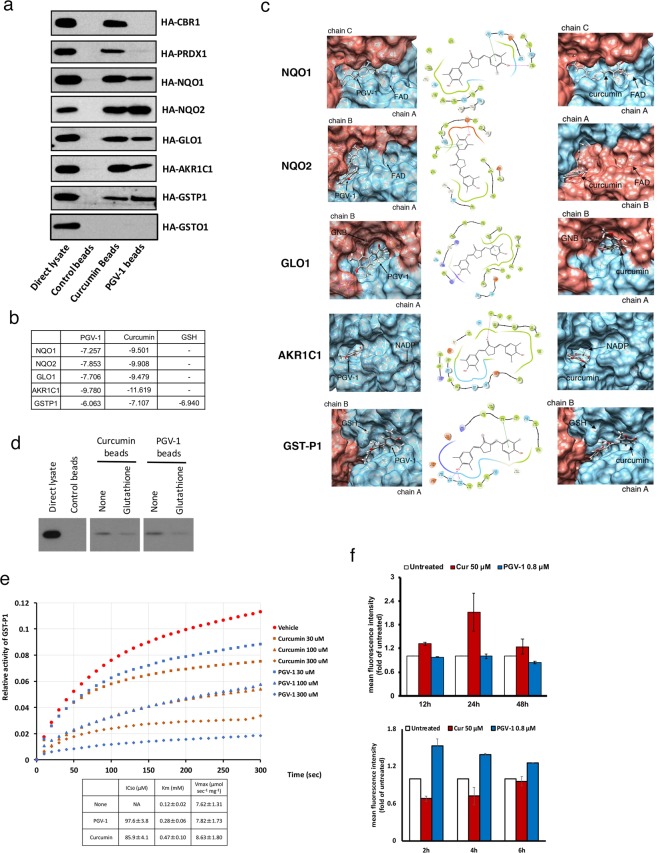Figure 3.
PGV-1 inhibits ROS metabolic enzymes. (a) Control, curcumin, and PGV-1 beads were subjected to a pull-down assay using cell lysates containing HA-CBR1, HA-PRDX1, HA-NQO1, HA-NQO2, HA-GLO1, HA-AKR1C1, HA-GSTP1, and HA-GSTO1 proteins. Bound proteins were visualized by immunoblotting using an anti-HA antibody. (b) Docking scores between ROS scavengers and PGV-1 or curcumin. (c) Docking poses between ROS scavengers and PGV-1 (left panels) or curcumin (right panels). Positions of the bound co-factors (FAD, GNB, NADP, and GSH) are also shown. Schematic diagrams of binding between PGV-1 and the corresponding amino acids are shown in middle panels. (d) Competitive pulldown assay between 293T cell lysates containing HA-GSTP1 and curcumin/PGV-1 beads in the presence or absence of 10 mM glutathione. Bound proteins were visualized by immunoblotting using an anti-HA antibody. (e) GST-P1 enzymatic activity was measured in vitro in the presence of curcumin and PGV-1. The IC50 of each compound is shown as the mean ± SD. Km and Vmax were also calculated. (f) K562 cells treated with curcumin (50 μM) and PGV-1 (0.8 μM) for 12, 24 and 48 hr (upper panel), or for 2, 4, and 6 hr (lower panel), were subjected to the ROS detection analysis using FACS.

